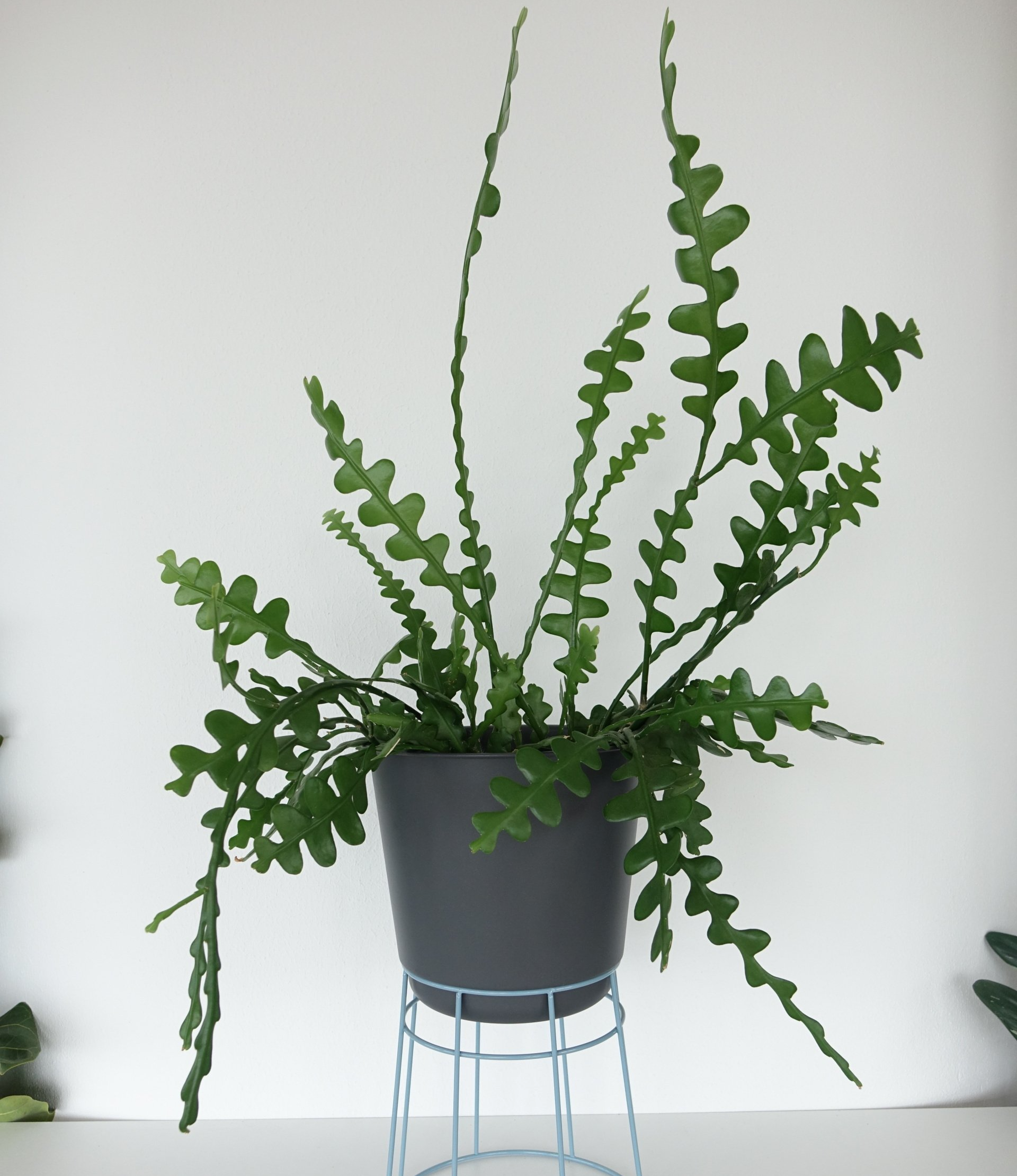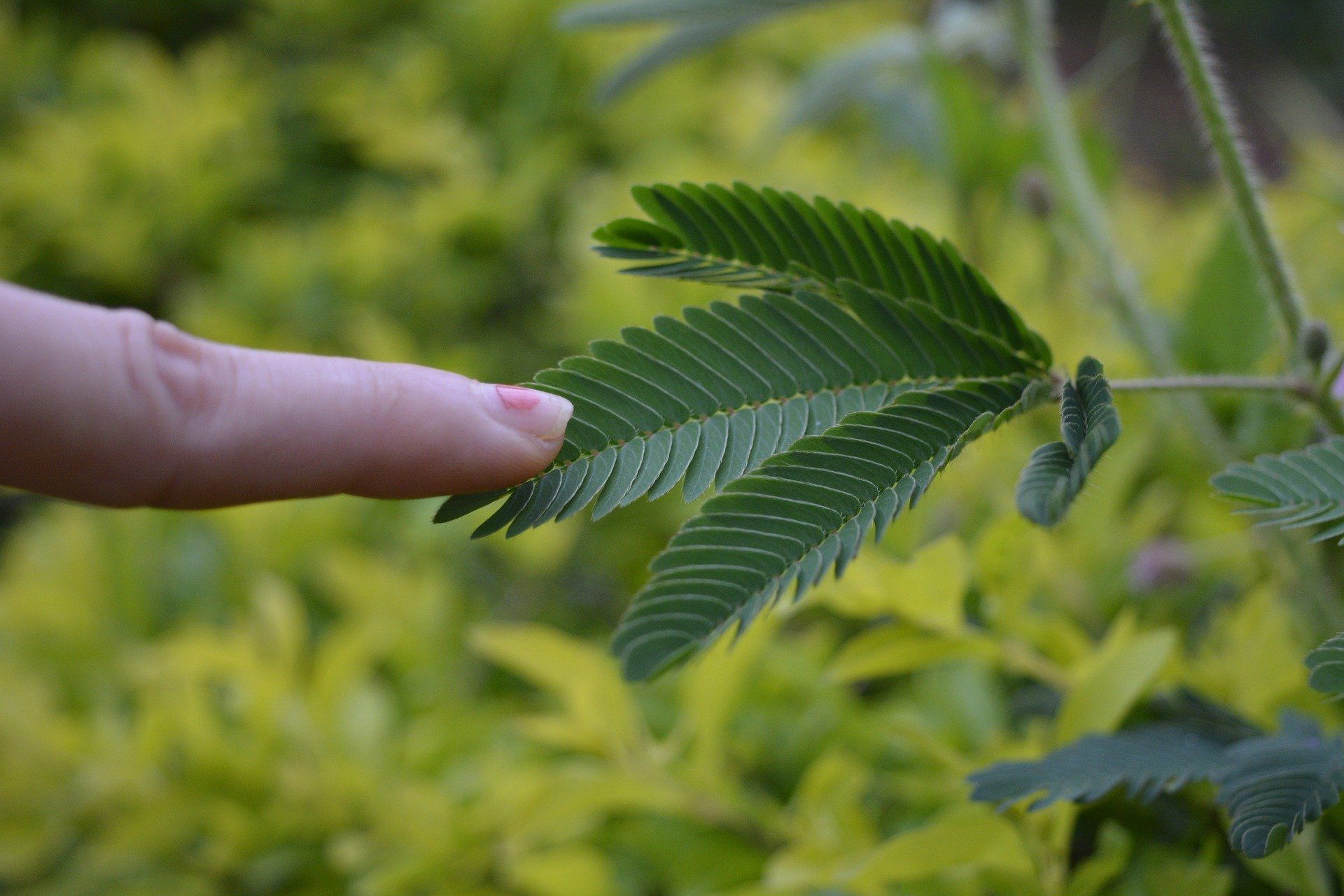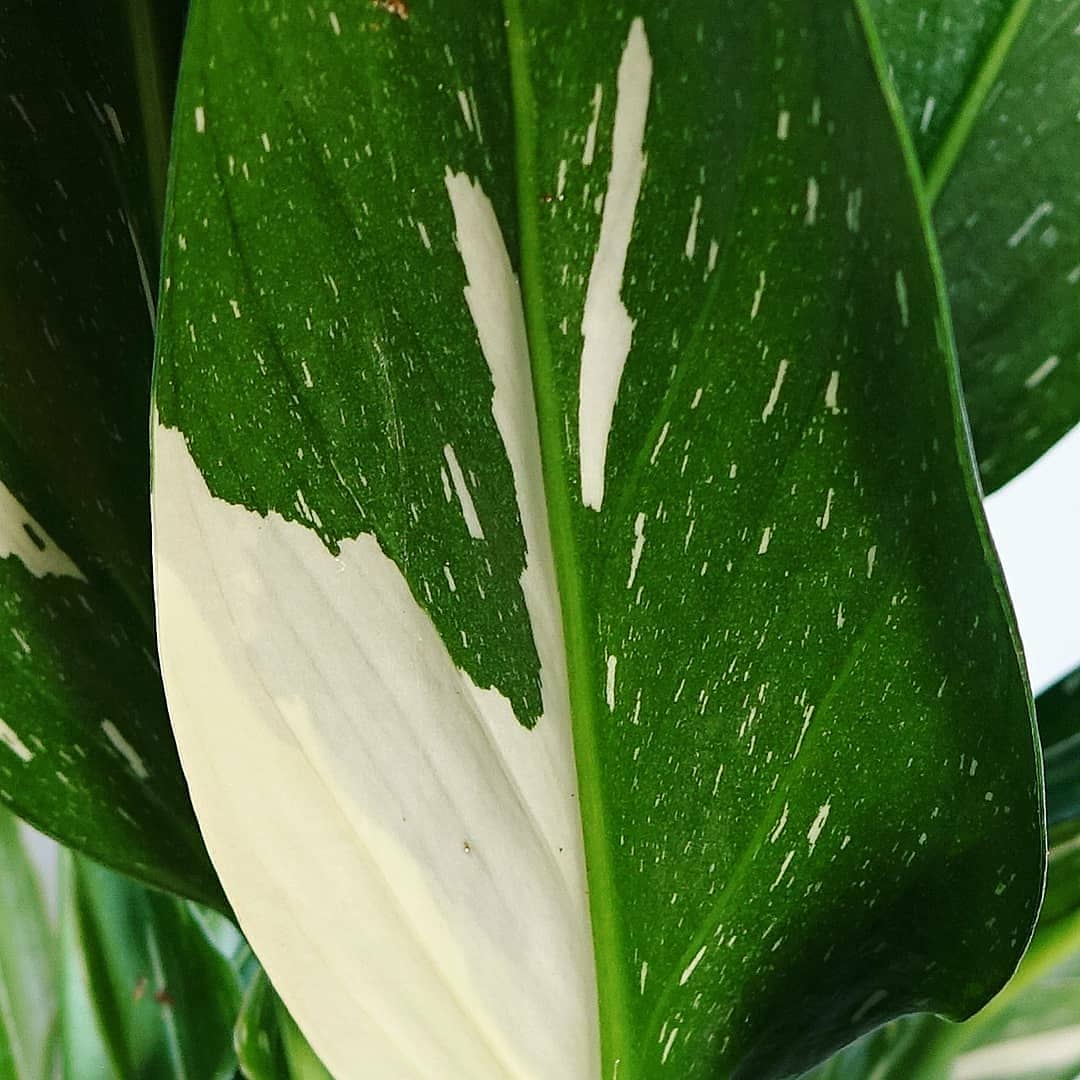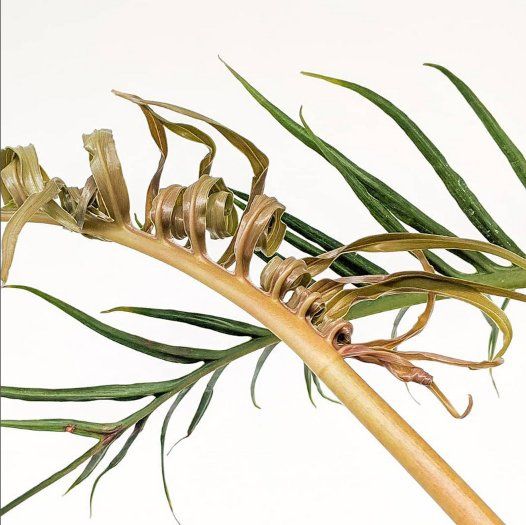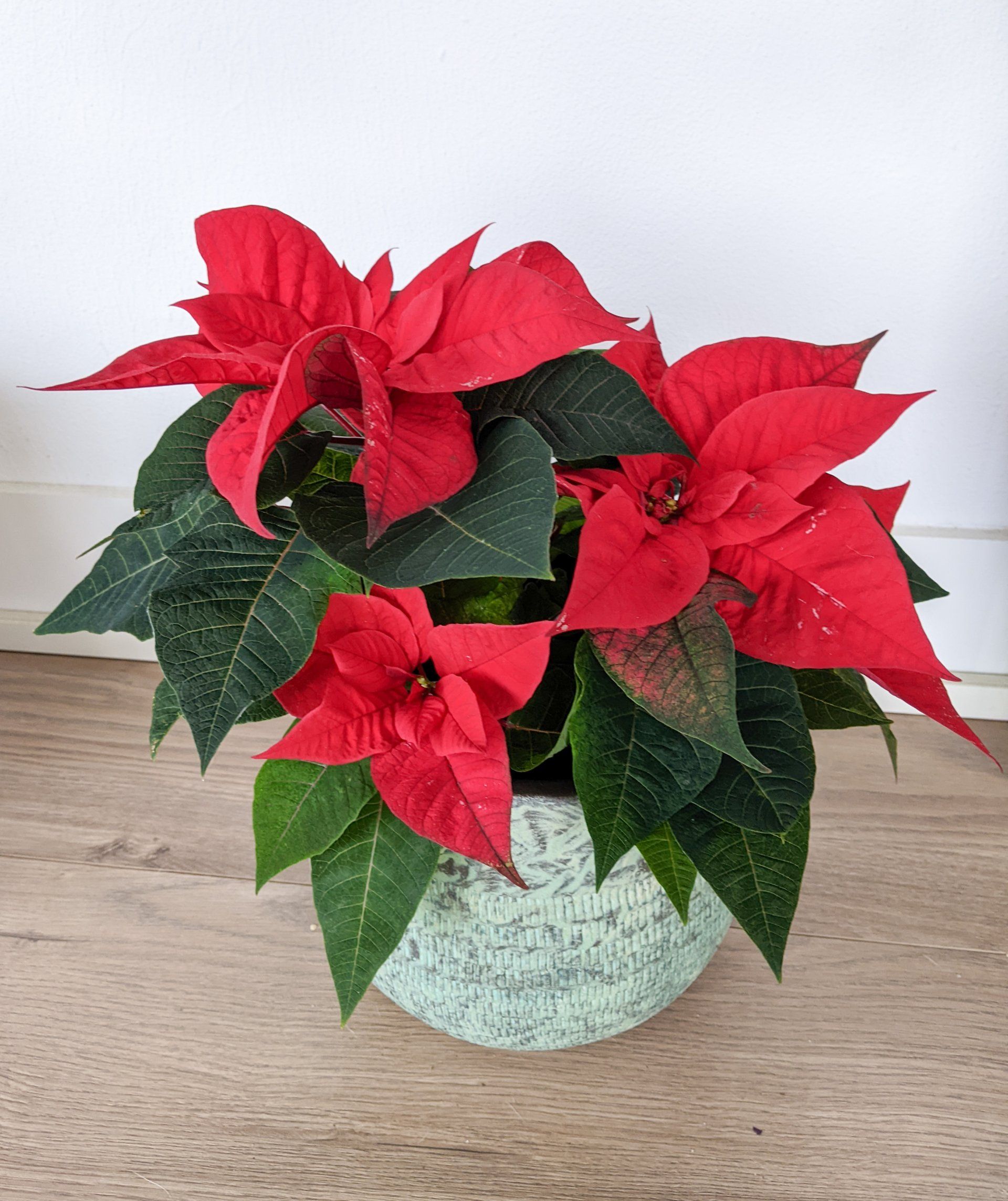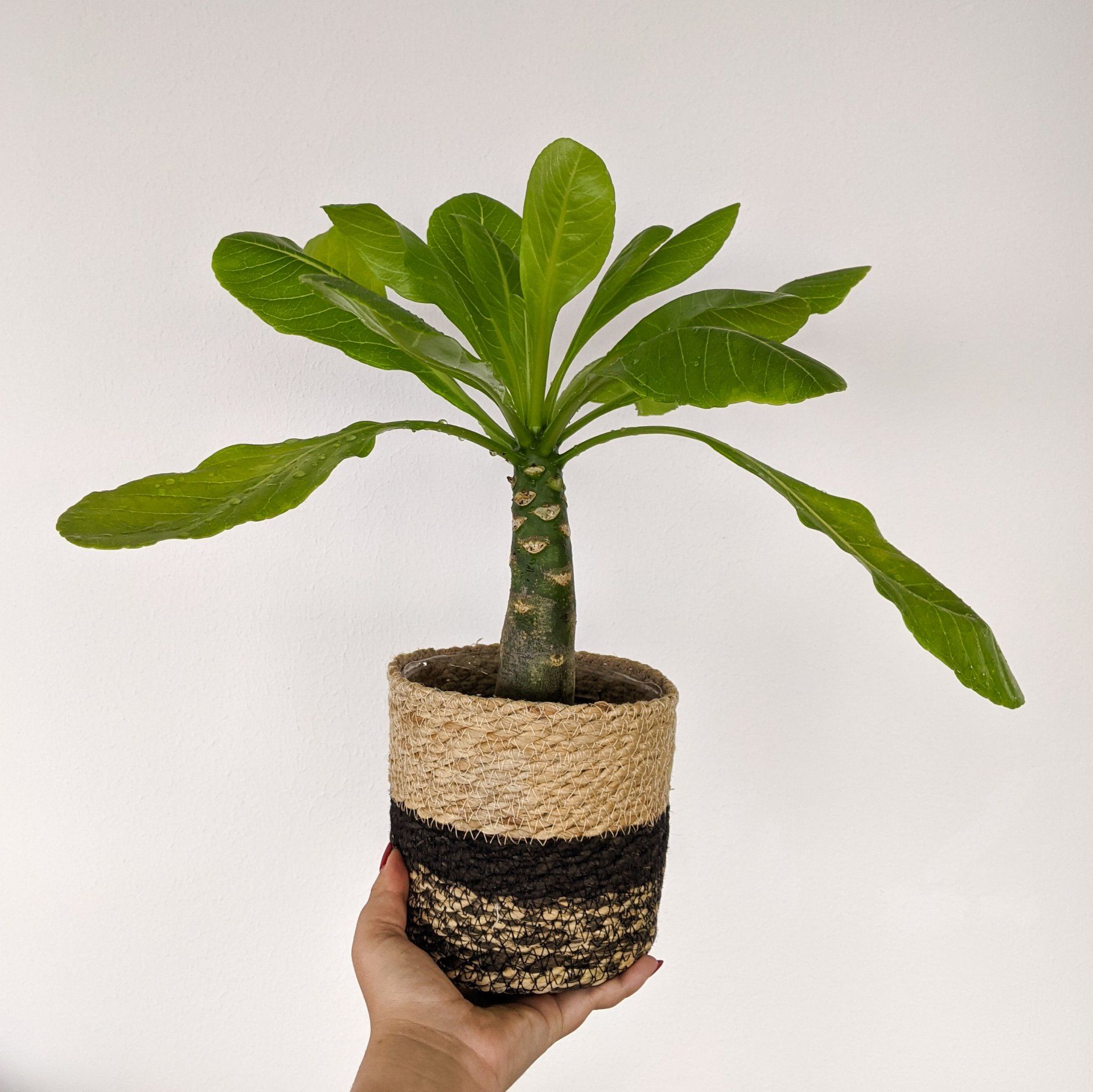555-555-5555
mijnmail@mailservice.com
Orchids in the air
An orchid for everyone
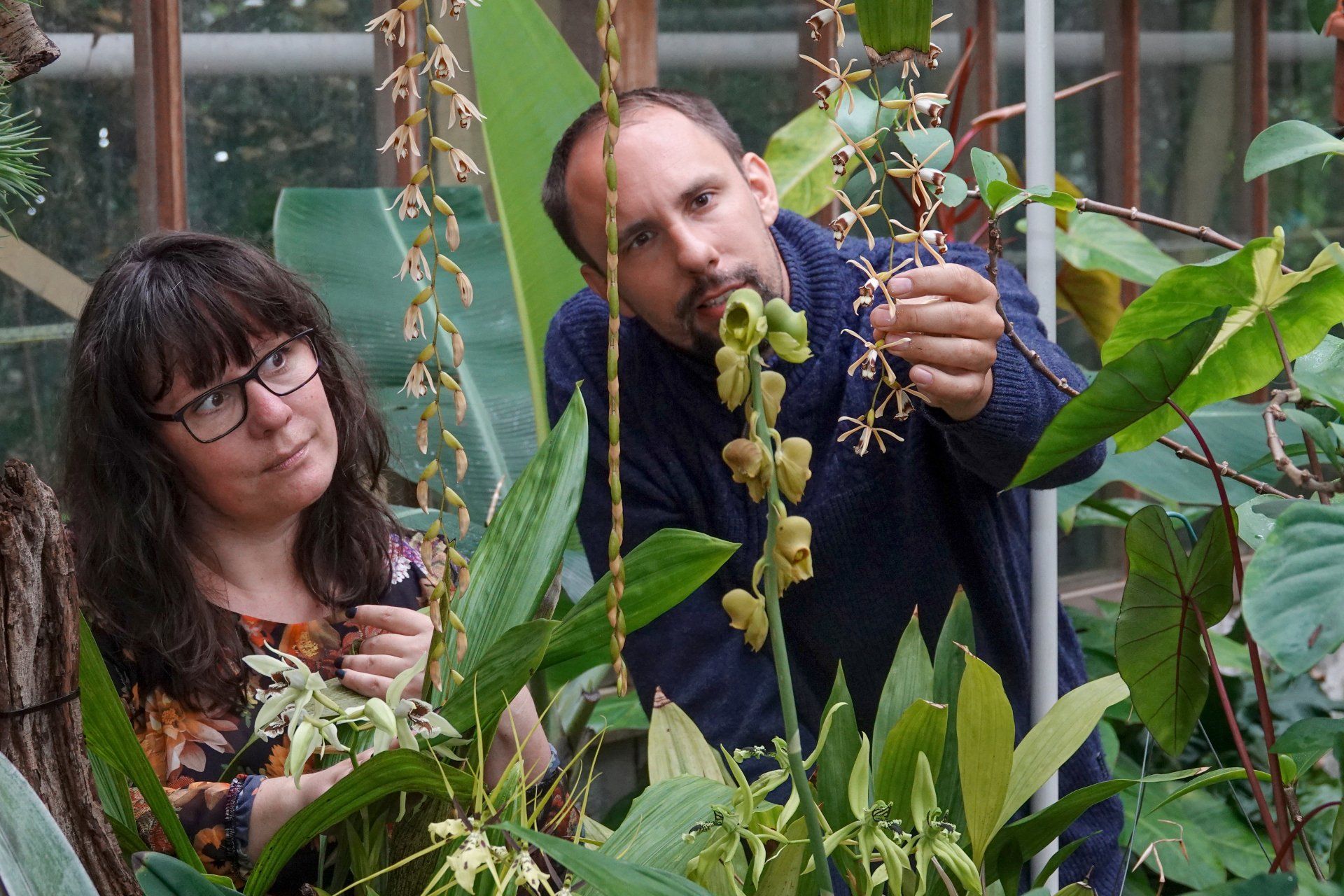
Left: me. Right: Rogier van Vugt. Photographer: Petra Sonius
Are orchids 'elite plants'? Or can everybody find an orchid to its taste? The November issue of Gardeners' World magazine NL featured an article by Rogier van Vugt (greenhouse chef Hortus Botanicus Leiden) and myself about orchids. You can download it (in Dutch!) or read the translation:
Marieke: I have something to confess, Rogier: until recently, no orchid was allowed in my house anymore… Years ago I had 2 Butterfly orchids (Phalaenopsis) and planned to take better care of them, hoping to get more flowers, or even keikis: these are shoots from which a new orchid emerges. Keiki is Hawaiian for "little one". That seemed like a fun challenge! Dip baths, fertilizer, I tried so hard. You can feel it coming… the Butterfly orchid doesn't like that at all! The worst is yet to come: to help the plants recover, I fabricated a tropical greenhouse: high humidity and nice and warm! Until one day in the summer I didn't pay attention and the poor plants burned to death on my south-facing roof terrace… Together with my good intentions I threw the plants away. No more orchids for me!
Roger: Ha. This sounds very familiar to me. I worked at an orchid grower for ten years and I heard stories like this regularly. Orchids, the elite of the houseplants, are not everyone's favorites.
However. if I may defend the orchid, the cause of such misery is almost always the bad choice of the buyer. There are about 30,000 different species of orchids in the wild alone, and these can be found from above the Arctic Circle to deep into steaming hot jungles. Specifically not liking orchids is therefore almost impossible. What is possible is that certain orchids just don't suit you, but there really is an orchid for everyone.
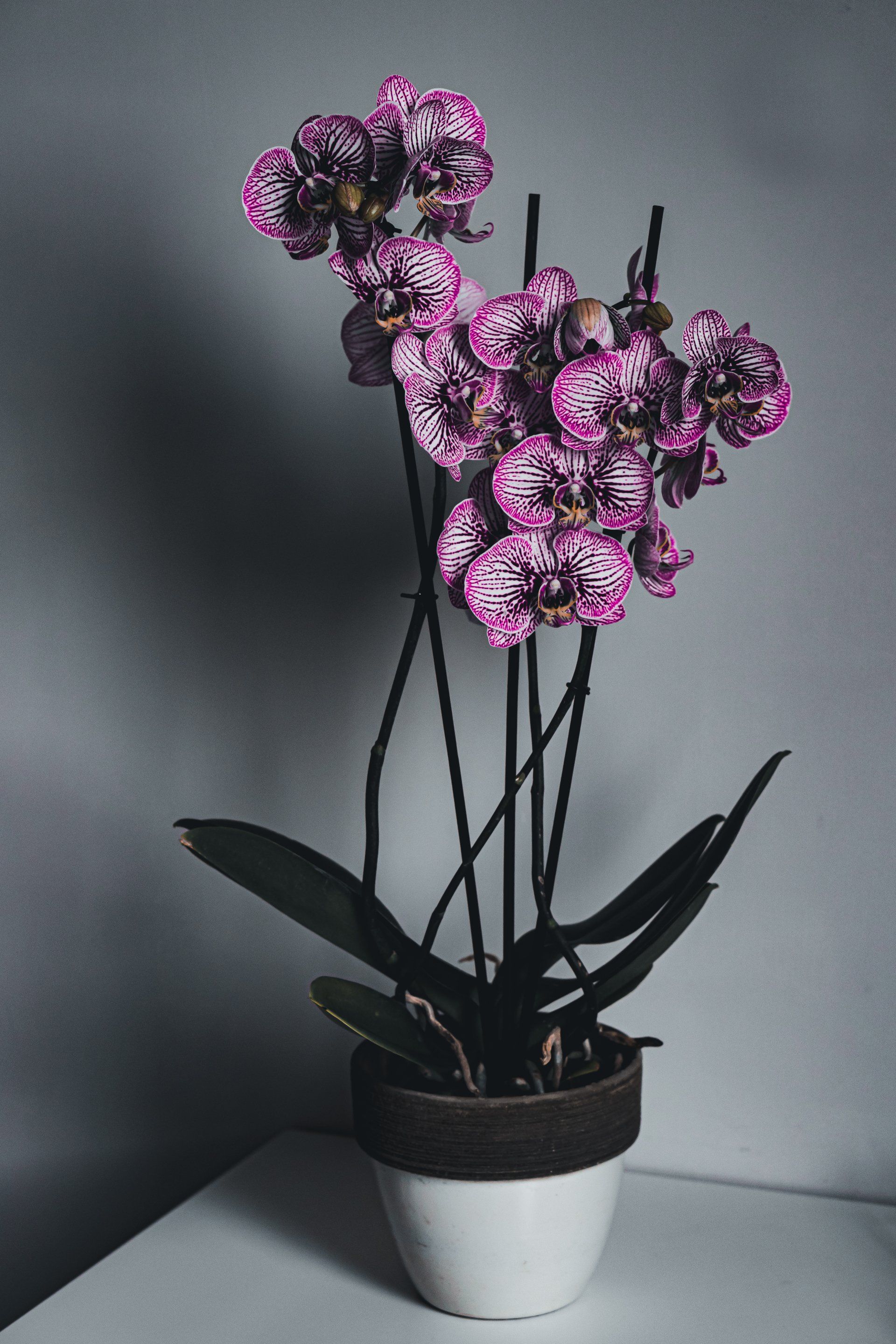
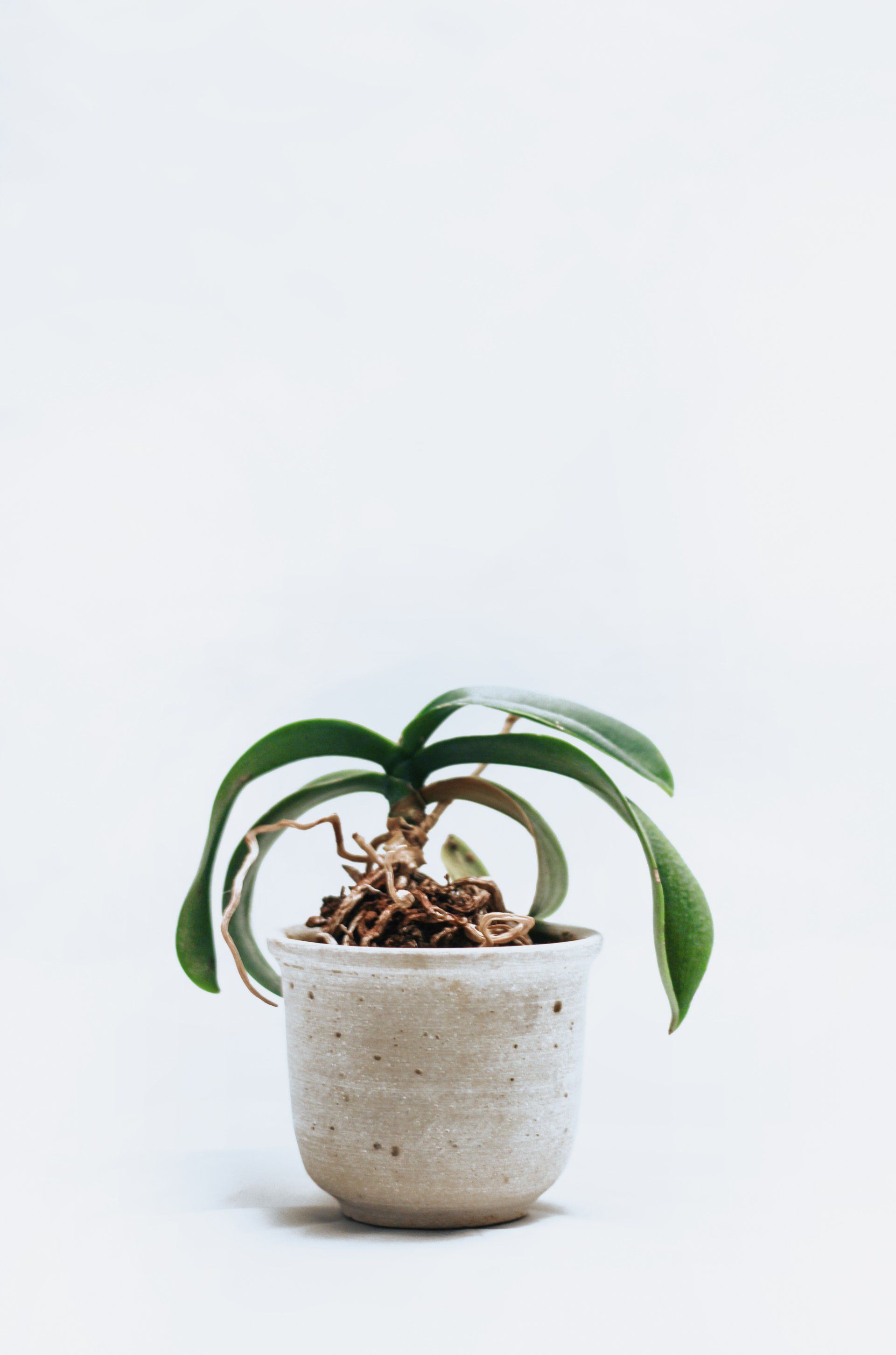
The well known Butterfly orchid, which did not flower for a long time
.
M: You're right! In the meantime I have found a few that suit me. In the photo of my trolley you can see a piece of bark with 3 small orchids (Mediocalcar, Dendrobium lichenastrum and a Barbosella) on it. Just like the Butterfly Orchid (Phaleanopsis) that everyone knows, these plants do not grow in soil, but on the bark of a tree. This is called an epiphyte. In the house I imitate life in a tree. Every so often I submerge the piece of bark under water and hang it back. Easy!
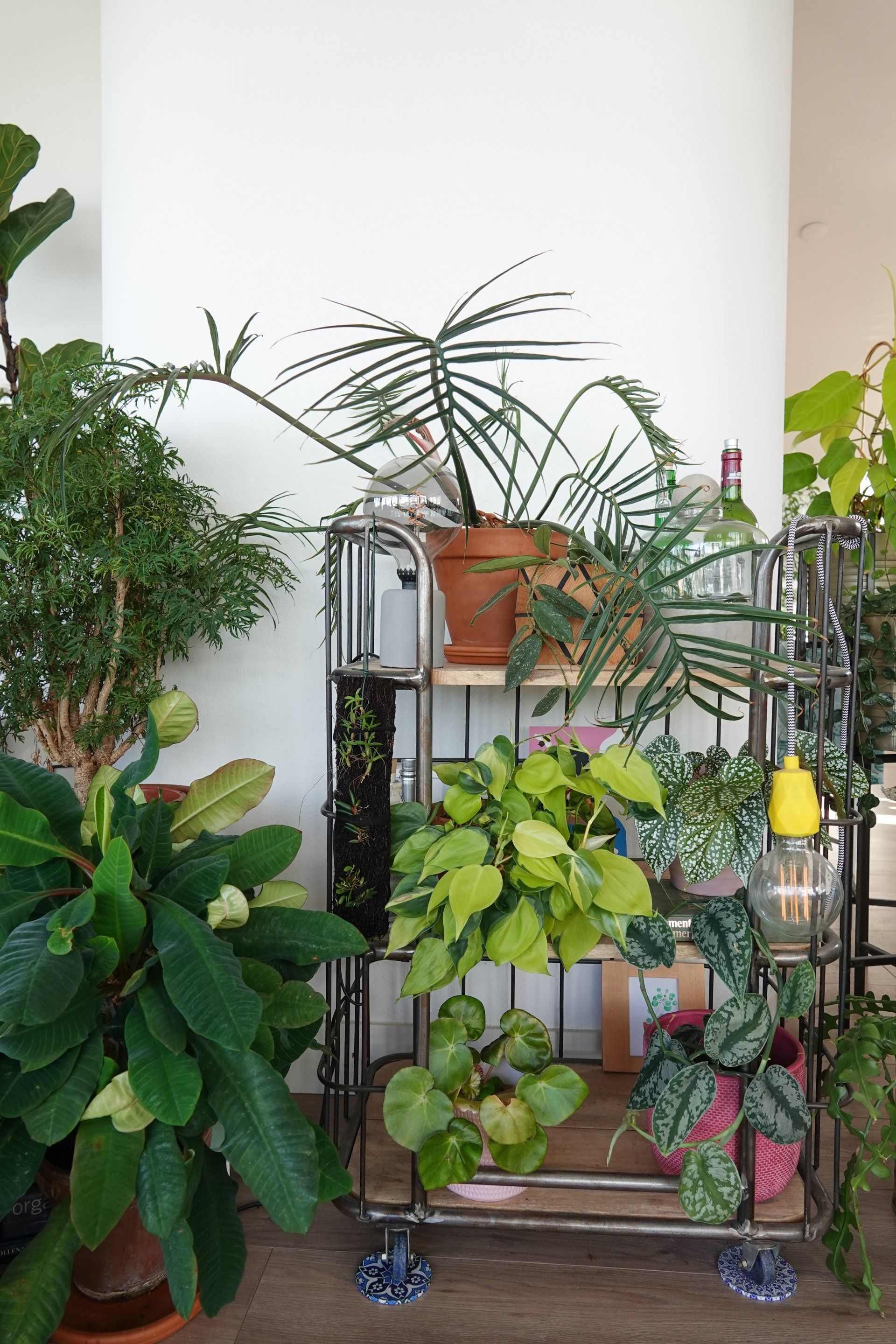
Three little orchids on bark, hanging on my trolley
R: Many of the orchids that we keep as houseplants are indeed epiphytes. These plants captured the imagination in Victorian times and unleashed a real orchid hype. The orchid's status as an elite and precious plant was born and we still find everything that has to do with orchids a lot more special than with other plants. Whether it concerns house plants or toilet fresheners
This means we are now dealing with plants that do not just grow in potting soil. Bark is a well-known ingredient of orchid substrate. Furthermore, there is often some peat or coconut fiber in it and sometimes Styrofoam. However, the most important ingredient is air. These plants like to have air at the roots and also want the root ball to dry up quickly between waterings.
M: Bark is excellent for quick drying and is also the reason that orchids do better in small pots. Never repot an orchid when you buy it, because then the flowers can just fall off. The stability of a small pot gives them the sturdiness of growing on a tree branch. If the plant starts to wobble, the first thing that is thrown off is the excess ballast, which are the flowers. Only when the soil is almost digested or the plant really bursts out of the pot is it time to repot. This is usually once every two to three years. Because the soil itself contains almost no nutrients, it is important to occasionally fertilize with orchid fertilizer.
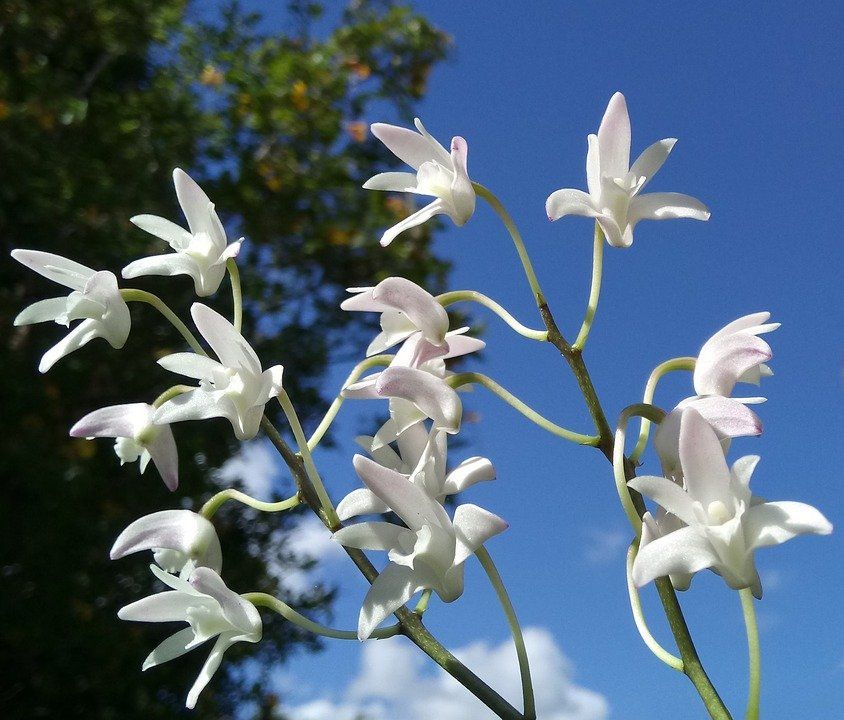
Dendrobium
R: Orchids are often thought of as plants with beautiful flowers but ugly leaves. But that's wrong. There are many beautiful and almost unknown species that are actually quite beautiful as a plant. These are for the real orchid lovers and are often the pure species as they also occur in the wild. Some of my favorite varieties are included such as the small Corybas orchids. With a little fitting and measuring, these also do well at home, such as in a terrarium.
A special group are jewel orchids. These beauties are just about leaves. We will come back to that later, because they deserve their own article.
Are you enthusiastic about orchids, but do you want something other than that same old Butterfly orchid? We get that! Below you find tips and a classification of orchids per place in the house.
Tip: small orchids that originally live in trees do well on a piece of bark. Carefully tie them with a strip of tights: this will not cut into the plant and will stretch with it.
Dip the piece of bark in the water once a week. Make sure it is completely dry before dipping again.
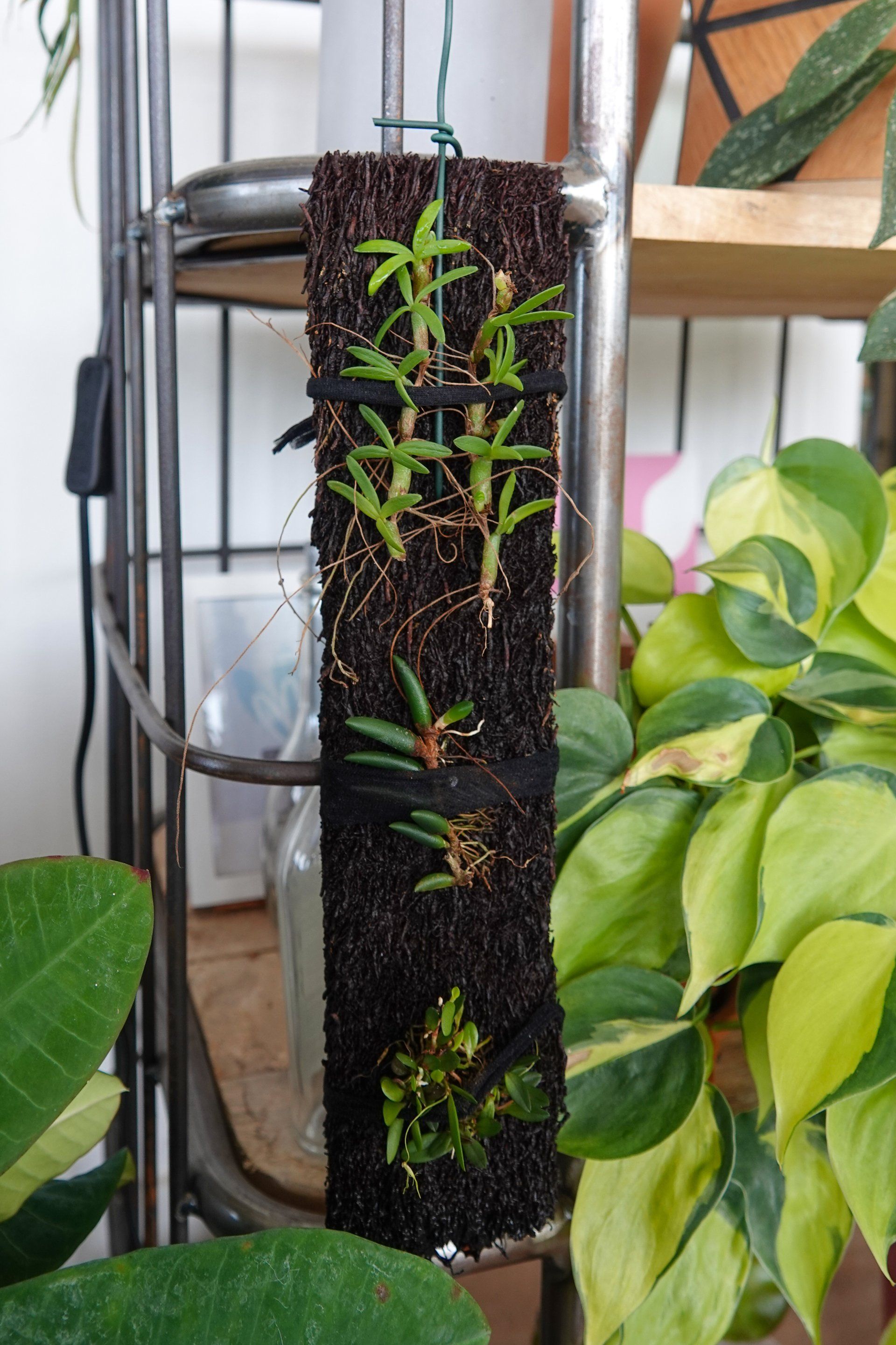
Tips for specialised orchid sellers:
BE CAREFUL! LDon't be temped to buy cheap orchids outside the EU! You cannot do this without a plant passport, you can get in trouble with customs.
Tips for orchids:
South facing window:
-
Phalaenopsis
-
Tiger orchid (Oncidium)
- Cattleya Green Emerald 'Orchid Queen'
- Dendrobium Sanook and other hard-leafed Dendrobiums
North facing window:
- Tooth orchid (Odontoglossum)
- Venus shoe (Paphiopedilum)
- Miltonia
- Dendrobium nobile and other soft-leafed dendrobiums
East and West facing windows:
- Cattleya trianaei var. coerulea x self
Questions or remarks? Don't hesitate to contact me!
